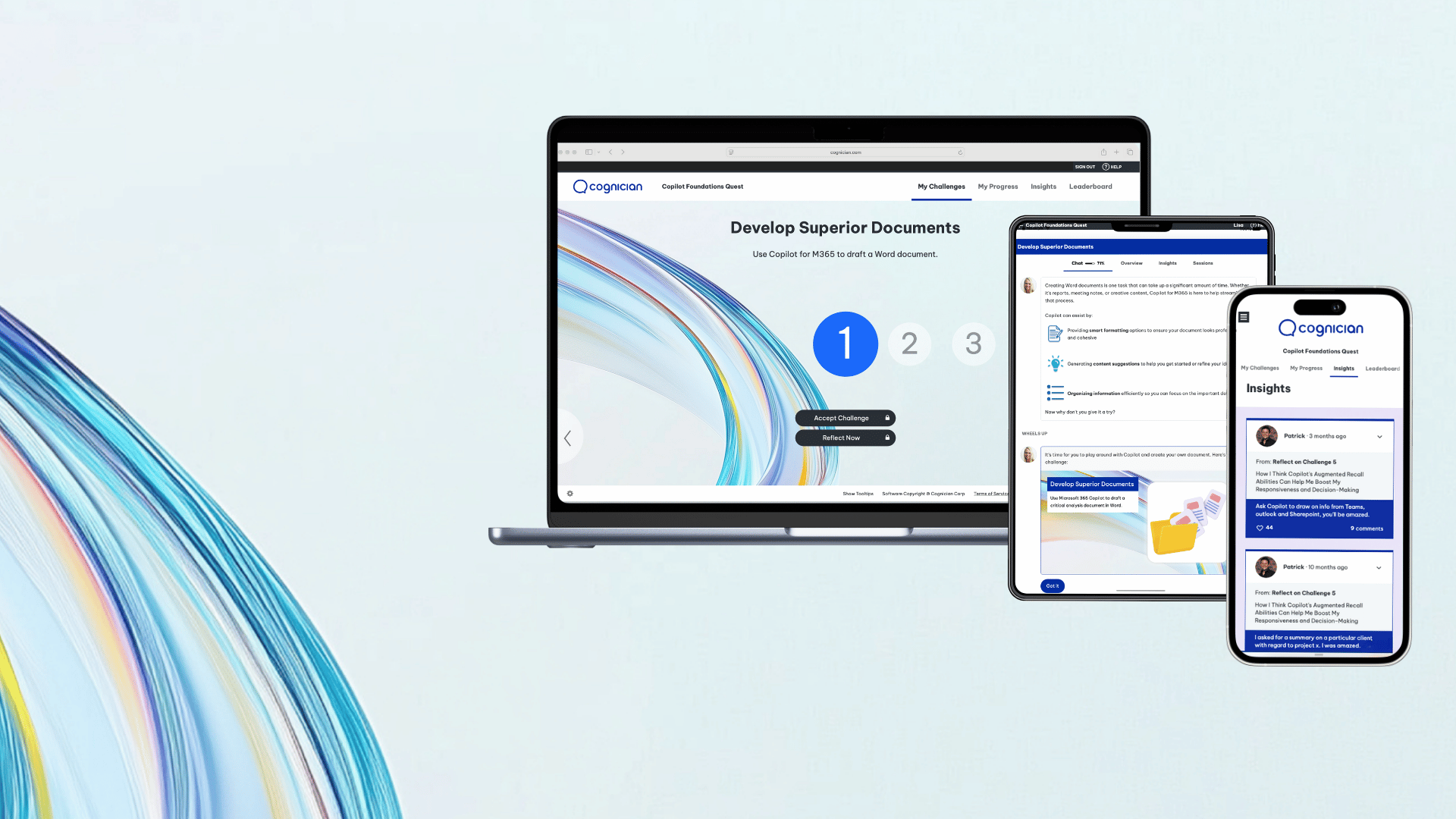Discover how to drive rapid change with behavioral tactics. Learn about actions that can boost transformation outcomes by as much as 400% in just four weeks.
Why does driving change often feel like turning a cruise liner when it could be as swift as steering a speedboat? In many cases, it's because change leaders rely on traditional methods that fail to capture attention and engage individuals in the change process. Conventional approaches such as communication campaigns and training programs often fall short. Communication campaigns have a limited lifespan – their impact diminishes over time. Training programs often focus more on content delivery than on participants and the real-world outcomes they need. The result? People may understand the change but fail to translate that understanding into action. So, how can you catalyze real change? The answer lies in applying principles from behavioral science.
The corporate landscape is evolving so rapidly that organizations need to invest in change capability as much as in change programs. This means empowering their people to integrate behavioral science into how they drive and respond to change. Companies invest in change initiatives aiming to become more agile or resilient. These goals are much more attainable when you use behavioral science to activate change.
It's a common misconception that to encourage new behaviors, you must train employees. At Cognician, we apply behavioral tactics in our change programs to achieve remarkable results. For example, a 475% increase in software adoption in four weeks, a 1,600% uplift in the application of power skills as measured by feedback in Workday, and a 5% increase in billable hours in the first month on the job. In each case, we've helped transform a cruise liner into a speedboat.
If we had offered our clients traditional training programs, they would have learned about new software, feedback, and increasing billable hours. However, they wouldn't necessarily have used the software, provided feedback, or increased actual billable hours. We began with these outcomes in mind and used behavioral tactics to prompt actions that training programs aim for but rarely achieve.
In addition to training programs and communication campaigns, many organizations rely on another traditional method of driving change: performance reviews. While the goal is accountability, performance reviews are periodic and often focus on past performance. They don't create the daily momentum needed for rapid behavior change. The core issue is that change managers often disregard the psychological drivers of human behavior. They don't take the time to understand what truly motivates individuals, leading to methods that miss the mark. Approaching change from a behavioral science perspective places you in a different starting position.
At Cognician, our starting point is to ask, "Who is the audience? And what is meaningful to them?" By designing activation experiences and nudges tailored to the audience, we enhance our chances of capturing their attention and involving them in the change process. For example, imagine you're struggling to get a group to adopt a new HR system as the holidays approach and adoption targets remain unmet. Boosting communications hasn't worked, and training isn't feasible due to time constraints. Performance reviews aren't scheduled for another quarter. Instead, we ask, "What is meaningful to this audience?" By recognizing that their leave balance is important during the holidays, we can enhance HR system adoption by nudging the group to explore their leave balances and book vacation time. Once engaged with the system, we can reward them for trying other functions, which they can share about on Teams.
This approach narrows the gap between intentions and desired behaviors. Adoption can only increase without relying on communications, training, or performance reviews.
The future of change management involves enabling change managers to effortlessly apply behavioral science principles. When they do, quicker, more sustainable transformations emerge.
To integrate this thinking into your change work, start by researching behavioral taxonomies to categorize human behavior into understandable segments. Apply key behavioral science principles to everyday change challenges, beginning with nudges – subtle reinforcements guiding people towards desired behaviors. Utilize tools like Cognician's Transformation Tactics, offering tangible ways to apply powerful behavioral tactics. Continuously monitor and adjust your strategies based on data insights. Don’t forget to engage your people and celebrate victories, as small wins can energize your transformation journey.
Driving change swiftly isn't a pipe dream; it's highly achievable. By harnessing behavioral science, we can achieve rapid, measurable results, perhaps even outpacing the rate of change.
What approach have you found most effective in driving rapid change within your organization?



.png)

